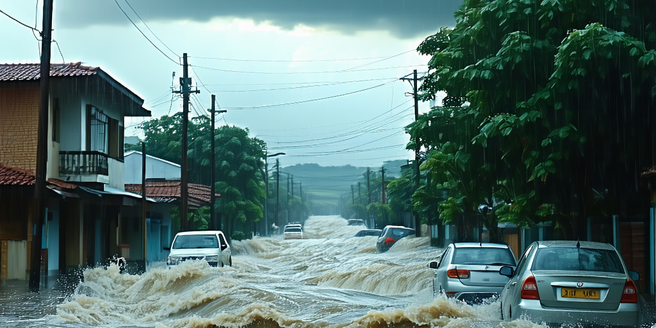
What Are Flash Flood Warnings?
Flash flood warnings are urgent alerts issued by meteorological agencies when flash flooding is imminent or already occurring. Unlike typical flood warnings, flash flood warnings signal rapid onset of severe flooding, usually within six hours of heavy rain or sudden water release. These warnings are based on weather forecasts, radar data, river gauges, and storm spotter reports. Many areas have emergency response plans in place to help communities prepare for such events. Proper understanding of flash flood warnings is crucial for safety since flash floods can develop quickly, catching individuals by surprise. It’s important to take immediate action upon receiving a flash flood warning, such as seeking higher ground and avoiding flood-prone areas. Awareness and quick response can be life-saving in these situations.
Common Triggers for Flash Floods
Flash floods are often triggered by intense rainfall events, especially when the ground is already saturated from previous rains. Other common causes include dam breaches, rapid snowmelt, or burst water mains. Climate change has also been linked to an increase in the frequency and intensity of flash floods. In some regions, wildfires can also increase the risk of flash floods by leaving the ground unable to absorb water. Urban areas, with their impervious surfaces, are particularly susceptible as they prevent water from being absorbed into the ground, leading to rapid runoff. Additionally, steep terrains can contribute as water flows rapidly down slopes, concentrating quickly into low-lying areas. Understanding these triggers helps in better preparation and swift response during such events, minimizing potential damage and ensuring public safety.
Decoding Weather Alerts and Signals
Weather alerts and signals are crucial for maintaining safety during severe weather events. These alerts include watches, warnings, and advisories, each indicating different levels of urgency. A watch signals potential conditions for a flash flood, prompting heightened awareness, whereas a warning indicates that flash flooding is either imminent or occurring and immediate action is necessary. Public education campaigns can help residents better understand how to react to these alerts. Ignoring these alerts can lead to dangerous consequences. Staying informed can significantly reduce the risks associated with severe weather conditions. It is vital to understand these distinctions to properly respond and ensure safety. By familiarizing oneself with local weather communication systems, it becomes easier to decode alerts and take appropriate measures swiftly.
The Role of Technology in Prediction
Technology plays a pivotal role in predicting and managing flash floods. Advanced meteorological models, satellite imagery, and radar systems enable meteorologists to forecast heavy rainfall and assess flood risks with increased accuracy. Geographic Information Systems (GIS) help in mapping flood-prone areas and predicting flood paths, allowing for timely warnings. These systems are continually refined to improve real-time data analysis. Innovations in machine learning algorithms have further augmented these forecasting capabilities. The combination of these technologies allows authorities to develop strategic evacuation plans. Additionally, community-based alert systems can disseminate warnings quickly via mobile devices. This technological integration enhances preparedness and response efforts, significantly reducing the impact of flash floods by ensuring timely evacuation and safety measures.
Safety Tips During a Flash Flood Warning
During a flash flood warning, prioritize your safety by taking specific actions. Flash floods can occur with little warning, making it crucial to act swiftly. Firstly, move to higher ground immediately, avoiding low-lying areas that may flood quickly. Do not attempt to cross flooded roads or bridges, as the depth and current can be deceptive and dangerous. Always inform someone of your whereabouts if you need to travel during such conditions. Ensure you have a battery-powered radio or mobile device to receive updates and instructions from local authorities. Prepare an emergency kit with essentials such as food, water, and medications. If evacuation is advised, follow routes that avoid flood-prone areas. Staying informed and prepared is key to navigating flash flood situations safely.
